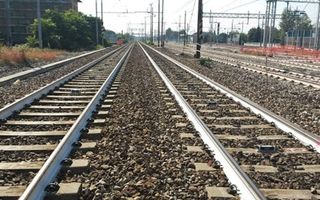(Telestock) – The work of Rete Ferroviaria Italiana continues at full speed (Leading Company of the Infrastructure Hub of the FS Group) for the major works started today three mechanical moleshe (Tunnel Boring Machine) in Campania, Puglia and Future Sicily, Marina and Luciathe first ones operational on the Naples-Bari AV/AC route and the last one on the Palermo-Catania-Messina route. The event held at the Apice shipyard (Benevento) was attended by Matteo Salvini, Vice President of the Council of Ministers and Minister of Infrastructure and Transport, Gianpiero Strisciuglio, CEO and General Manager of RFI and Pietro Salini, CEO of Webuild.
The new Naples-Bari line and the Palermo-Catania-Messina line – explains the note – are included in the Cantieri Parlanti project, created by FS Group in collaboration with MITto transparently describe the activities and benefits of the new infrastructures through public initiatives, information points and a web page dedicated to strategic works.
On the route Apice-Hirpinia, the Future TBM will dig the Rocchetta Galleryapproximately 6.4 kilometers long. Futura consists of a rotating head with a diameter of 12 meters driven by 18 motors that generate a total power of 3Mw. It will work 24 hours a day, seven days a week, and will employ over 100 highly specialized people. During the advancement phases, the mechanical mole will also create the waterproof lining of the tunnel. It is the second TBM started on the same section after Aurora which has already excavated approximately 90% of the Grottaminarda tunnel. The works on the Apice-Hirpinia section, with an investment of approximately 628 million euros, were entrusted by RFI to the Hirpinia AV Consortium (Webuild), under the Works Management of Italferr.
On the Orsara – Bovino section, the TBM Marina will excavate the first of the two tubes of the Orsara tunnelapproximately ten kilometers long. Marina consists of a rotating head with a diameter of 9 meters, driven by 11 engines that generate a power of 3 MW. It will work 24 hours a day, seven days a week, with a workforce of approximately 100 highly specialized people. During the advancement phases of the excavation, the mechanical mole will create the waterproof lining of the tunnel.
The works on the Orsara-Bovino section, with an investment of approximately 562 million euros, were entrusted by RFI to the Orsara-Bovino AV Consortium (Webuild and Pizzarotti), under the Works Management of Italferr.
The doubling of the Apice-Orsara section and that of the Orsara – Bovino are developed entirely as a variant of the existing line. In particular, the doubling of the Apice – Orsara section extends for approximately 47 kilometers, of which 80% in tunnels, and includes the construction of a new station serving Irpinia, as well as two stops, and the elimination of fifteen level crossings, while the doubling of the Orsara – Bovino section extends for approximately 12 kilometers, of which 80% in tunnels, with the elimination of four level crossings.
The new High Speed/High Capacity line Naples – Bari is an integral part of the European TEN-T Scandinavia – Mediterranean railway corridor and is also financed with PNRR funds. With the activation of the Cancello – Frasso section planned for 2025, it will be possible to travel directly from Bari to Naples in 2h 40′; upon completion of the entire work, by 2028, it will be possible to travel from Bari to Naples in two hours, to Rome in three hours and from Lecce and Taranto to the capital in four hours. The work already constitutes a driving force for development for the territory and for the creation of jobs: the entire work involves approximately 7 thousand people including engineers, technicians and workers, in addition to a supply chain of 2 thousand companies including suppliers and subcontractors.
The TBM Lucia, which joins the Igea mole already operational since April 2024, is the second of five moles planned in the project to double the Giampilieri-Fiumefreddo section along the Palermo-Catania-Messina route and will be involved in the excavation of the Taormina Tunnel, over 6 kilometers long, with a double barrel. The project is part of the works to enhance the Palermo-Catania-Messina connection and will complete the doubling of the railway line between Messina and Catania, through the construction of 42 kilometers of new double track, of which approximately 37 are underground and in variation with respect to the current line.
Two lots iwhere the project for the completion of the doubling of the Messina-Catania line is dividedthe first, from Fiumefreddo to Taormina, It extends along a route of about 14 kilometers with two viaducts, three tunnels, for a total of about 11 kilometers, an artificial tunnel of one kilometer, the new Taormina station and the two stops Fiumefreddo-Calatabiano and Alcantara-Giardini Naxos. The second lot includes 28 kilometers of new double-track line, with six viaducts for about two kilometers, eight tunnels, for about 25 kilometers underground, two stations and two stops.
The interventions to speed up the Messina-Catania-Palermo route, a project by RFI with the management of works by Italferr, worth approximately 12 billion euros, overall, they will guarantee compliance with interoperability requirements and will allow a significant growth in the competitiveness of rail passenger transport, responding to mobility needs in terms of reduction of travel times, regularity and frequency.
At the moment – the note concludes – interventions are underway on all the lots of the new Palermo-Catania itinerary, for a total length of 179 kilometers. All these interventions are functional to making the railway network of southern Italy increasingly competitive, acting on multiple levels to create a system of integrated, efficient and sustainable transport, capable of supporting the growing tourist demand, the needs of citizens and freight traffic.
